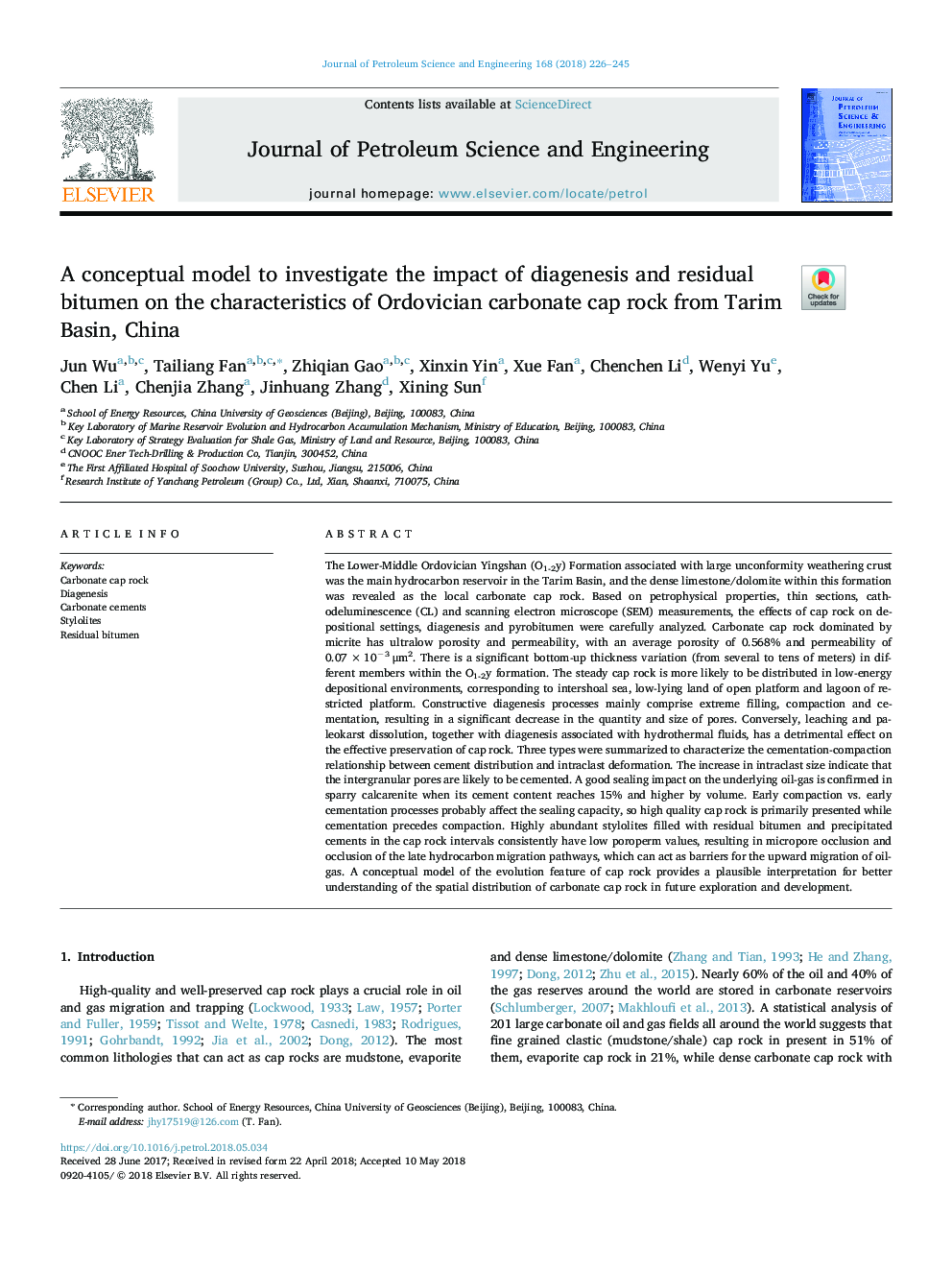| Article ID | Journal | Published Year | Pages | File Type |
|---|---|---|---|---|
| 8124689 | Journal of Petroleum Science and Engineering | 2018 | 20 Pages |
Abstract
Conceptual model describing the controlling factors of cap rock in the behavior of selective dissolution, cementation, stylolitization, tectonic activity and oil charging events. (A) Primary carbonate rocks deposited in diverse paleogeomorphic units; (B) Meteoric fresh water leaching along the small fractures or small reverse faults, dissolved CO2 made the water more acidic; (C) Selective dissolution because of lithological heterogeneity; (D) Continuous deposition; (E) Progressive burial; (F) With the increasing pressure of overlying sediments, the strata pressure became overburden; (G) Stylolites formation was triggered by increasing pressure of overlying sediments during the pressure solution process; (H) Irreducible water and connate water were expulsed along the stylolites; (I) Stylolites provided the channels for the hydrocarbon charging, only residual bitumen distributed along or in the vicinity of stylolites; (J) Tectonic activity during the Early Hercynian orogeny resulted in tectonic uplift, formed the major faults, the combination of fractures cemented with high resistivity calcite and stylolites filled with pyrobitumen residues or illite that impeded the oil charging; (K) Hydrothermal fluid migrated up along the faults during the Late Hercynian orogeny, enhancing porosity and permeability and likely causing loss of sealing capacity.379
Related Topics
Physical Sciences and Engineering
Earth and Planetary Sciences
Economic Geology
Authors
Jun Wu, Tailiang Fan, Zhiqian Gao, Xinxin Yin, Xue Fan, Chenchen Li, Wenyi Yu, Chen Li, Chenjia Zhang, Jinhuang Zhang, Xining Sun,
